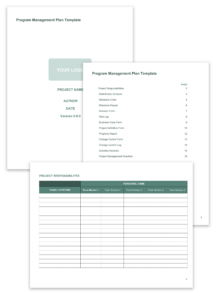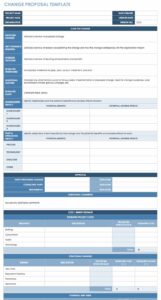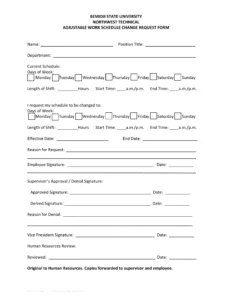Utilizing such a structured approach offers several advantages. It minimizes misunderstandings and errors by providing a consistent format for requesting and evaluating changes. This, in turn, facilitates better decision-making by presenting all relevant information in an organized manner. Furthermore, it supports proper change management, creating an audit trail for all modifications and contributing to improved project outcomes. By maintaining a record of changes, project managers can effectively track the evolution of the project and manage the impact of each modification on the overall plan.
This structured approach to managing project modifications forms the foundation for successful project delivery. The subsequent sections will explore the key components of these structured forms, the process of submitting and approving changes, and best practices for effective change management.
Key Components of a Standard Change Request Form
Effective change management relies on a well-structured process for documenting and evaluating modifications. Standardized forms provide the necessary framework for capturing all essential information related to a proposed change. The following components are typically included in these forms:
1. Change Identifier: A unique number assigned to each change request for tracking and referencing purposes.
2. Request Date: The date the change request was submitted.
3. Requester: The individual or group initiating the change request.
4. Description of Change: A clear and concise explanation of the proposed modification.
5. Justification: The reasoning behind the change request, including the benefits and necessity of the modification.
6. Impact Analysis: An assessment of the potential effects of the change on project scope, schedule, cost, resources, and quality.
7. Proposed Solution: A detailed description of how the change will be implemented.
8. Approval Status: Indicates the current stage of the approval process (e.g., pending, approved, rejected).
These elements provide a comprehensive overview of the proposed change, enabling stakeholders to make informed decisions. Thorough documentation ensures transparency and facilitates effective communication throughout the change management process, ultimately contributing to successful project completion.
How to Create a Standardized Change Request Form
Developing a standardized change request form is crucial for effective project change management. A well-defined template ensures consistency and completeness in documenting proposed modifications. The following steps outline the process of creating such a form.
1. Define Required Fields: Identify essential information needed to evaluate a change request thoroughly. This typically includes a unique identifier, request date, requester information, description of the change, justification, impact assessment, proposed solution, and approval status. Additional fields may be added based on specific project requirements.
2. Design the Form Layout: Create a clear and organized layout for the form. Group related fields logically to enhance readability and facilitate efficient data entry. Consider using tables or sections to structure the information effectively.
3. Establish Approval Workflows: Define the approval process for change requests. Specify the individuals or groups responsible for reviewing and approving changes at different levels. Incorporate fields within the form to capture approval signatures and dates.
4. Develop Supporting Documentation: Provide clear instructions on how to complete the form. Include examples and guidelines for conducting impact assessments and formulating proposed solutions. This supporting documentation will ensure consistency and accuracy in the use of the form.
5. Implement Version Control: Track revisions to the change request form itself. Maintain a record of changes made to the template over time, including the date of modification and the rationale behind the changes. This ensures that the form remains up-to-date and aligned with evolving project needs.
6. Train Project Team Members: Educate project team members on the purpose and use of the change request form. Provide training on how to complete the form accurately and follow the established approval workflows. This will ensure proper utilization and adherence to the defined change management process.
7. Regularly Review and Update: Periodically review the effectiveness of the change request form and make necessary updates based on feedback and experience. Continuous improvement of the form will contribute to more efficient and effective change management.
A well-designed, consistently implemented, and regularly reviewed standardized form facilitates efficient change management processes, fostering clear communication, minimizing errors, and supporting informed decision-making. These practices are essential for successful project outcomes.
Standardized forms for documenting project modifications provide a crucial framework for effective change management. These forms facilitate clear communication, enable thorough impact assessments, and support informed decision-making throughout the project lifecycle. Key components such as unique identifiers, detailed descriptions, justifications, and impact analyses ensure comprehensive documentation of proposed changes. Establishing clear approval workflows and providing supporting documentation further enhances the effectiveness of the change management process. Consistent use of these structured forms promotes transparency, minimizes errors, and contributes to successful project outcomes.
Effective change management is paramount to navigating the dynamic nature of projects. Proactive planning, coupled with robust processes and tools, equips organizations to adapt to evolving requirements and deliver successful projects. Embracing a structured approach to change management empowers teams to control project outcomes, minimize disruptions, and achieve strategic objectives. Continuous improvement of change management practices remains essential for organizations seeking to enhance project delivery and achieve sustained success.


